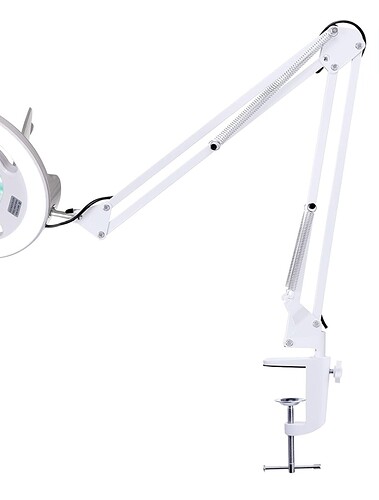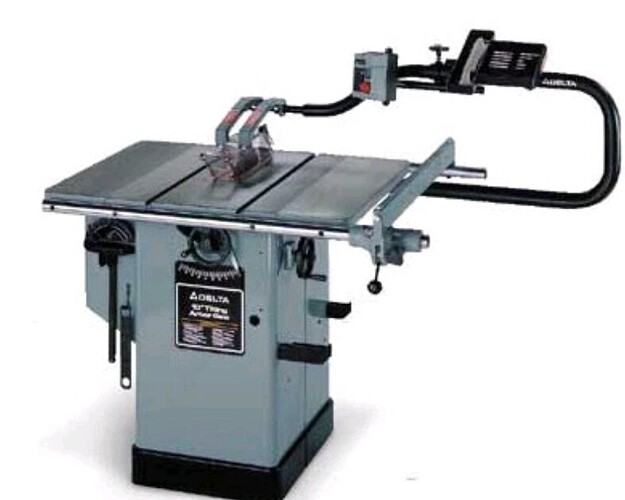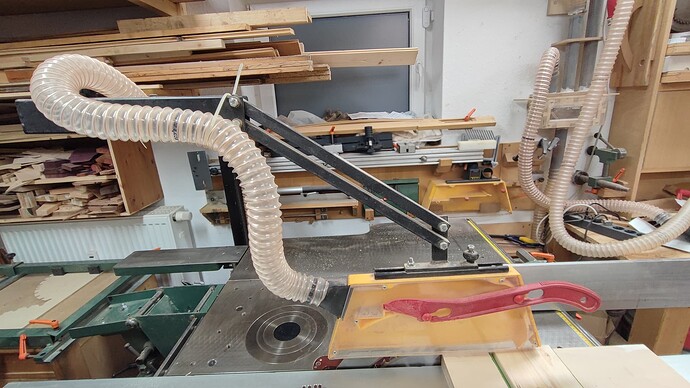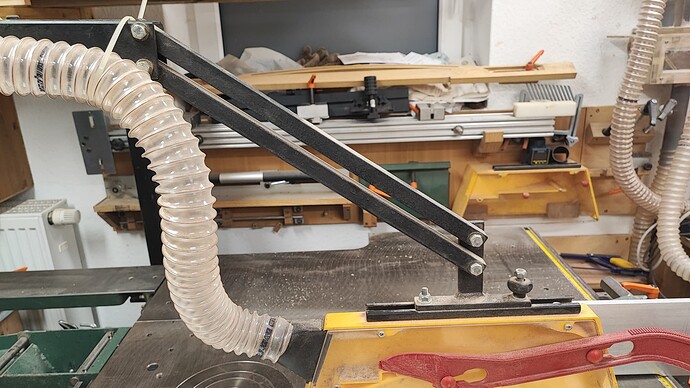I’m curious if someone out there in “V1E Mechaniker" land has or can provide a reference to the design of these typical spring-loaded parallel raising and lowering mechanism, typical of desk lamps.
I have a dust collection shroud for my Delta Unisaw that works pretty well (SharkGuard, https://www.thesharkguard.com/) but it was designed to attach to a riving knife mechanism and is therefore not movable.
I also have the Delta Uniguard which works very well and is extremely convenient so you can actually routinely USE it, and I do/have (for more than 25 years). However, because of the split guard, it’s not suitable for dust collection.
A possible solution would be to design a mount for the SharkGuard shroud that is attached to the Uniguard rail and would allow the Shark to be raised and lowered with the spring mechanism providing a suitable counterbalance so that it will stay in place at a particular during dado or blade changing operations.
Right now, I have the SharkGuard attached to the Uniguard bracket so it can be rotated up and out of the way. But, it’s pretty wobbly and a bit awkward so I’m wondering if one of these parallelogram mechanisms might work better.
This is such a universal design that I figure there must be design rules for getting the proper dimension and locations of the spring, etc. The geometry is simple, but I’m not a mechanical engineer, so for me, doing it without an enormous amount of trial error doesn’t seem likely.
Any one out there who has done this?



